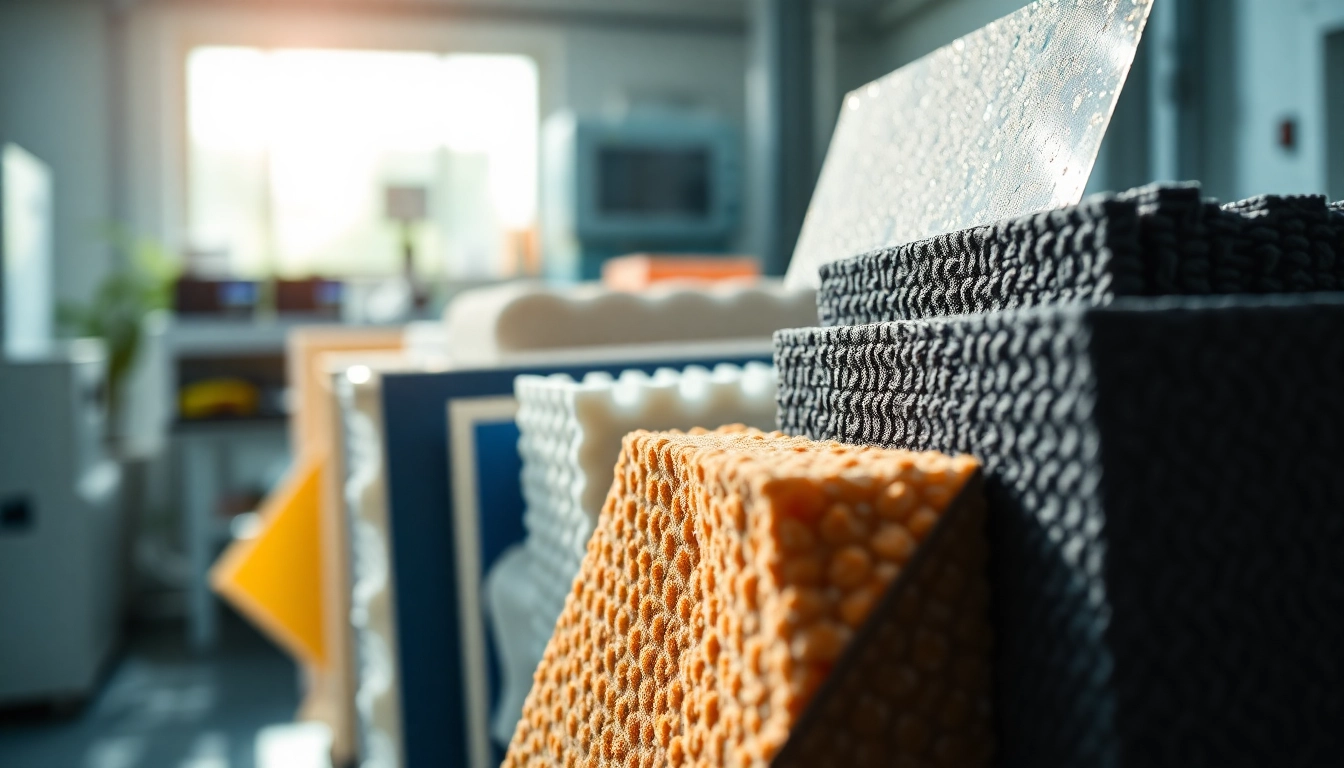
Understanding Thermal Management Materials
In the rapidly evolving world of electronics, managing heat is critical for maintaining device performance and longevity. This is where thermal management materials play a pivotal role. These materials help mitigate overheating, enhance efficiency, and ensure the reliable functioning of electronic components. In this comprehensive overview, we will explore what thermal management materials are, their benefits, and their applications in electronics, helping organizations make informed choices about their thermal management solutions.
What Are Thermal Management Materials?
Thermal management materials encompass a diverse range of substances and products designed specifically to manage and dissipate heat generated in electronic devices. Their primary function is to minimize thermal resistance between components, thereby facilitating efficient heat transfer. These materials can be categorized into several types, including thermal interface materials (TIMs), gap fillers, thermal pads, and thermal adhesives. The correct application of these materials can significantly enhance the performance of electronic devices and systems.
Key Benefits of Using Thermal Management Materials
The implementation of thermal management materials offers several advantages that contribute to the overall efficiency and durability of electronic devices:
- Enhanced Heat Dissipation: Thermal management materials facilitate rapid heat transfer from critical components to heat sinks or ambient air, effectively reducing the risk of overheating.
- Improved Device Reliability: By maintaining optimal operating temperatures, these materials contribute to the longevity of electronic components, minimizing the risk of failure.
- Energy Efficiency: Effective thermal management can lead to reduced energy consumption, translating into lower operating costs and a more sustainable operation.
- Design Flexibility: Many thermal management materials can be customized to fit unique device geometries, allowing for versatile applications across various industries.
Common Applications in Electronics
Thermal management materials are utilized in various electronic applications, including:
- Consumer Electronics: Products such as smartphones, laptops, and gaming consoles rely on thermal materials to maintain performance under heavy use.
- Automotive Electronics: In electric vehicles and hybrid vehicles, thermal management is crucial for battery efficiency and safety.
- Data Centers: High-performance computing systems require efficient heat dissipation methods to maintain optimal operating conditions.
- Telecommunications: High-frequency devices and networks demand reliable thermal management solutions to prevent signal loss and component failure.
Types of Thermal Management Materials
Overview of Thermal Interface Materials (TIM)
Thermal Interface Materials are pivotal in enhancing heat transfer between components. TIMs are used between heat-generating elements, such as CPUs and GPUs, and their heat sinks or spreaders. They fill microscopic air gaps, ensuring more efficient thermal conduction. Various forms of TIMs include:
- Thermal Greases: Typically silicone-based, these materials provide excellent conductivity and are often used in computer processors.
- Thermal Pads: Solid sheets of material that can be easily cut to size for specific applications. They provide a reliable interface while being less messy than greases.
- Phase Change Materials (PCMs): These substances absorb or release heat during the transition between solid and liquid states, offering dynamic thermal management.
Gap Fillers and Their Importance
Gap fillers play an essential role in thermal management by eliminating air gaps between uneven surfaces. They maintain thermal conductivity and enhance heat transfer to the heat sinks. Some characteristics of effective gap fillers include:
- Good Thermal Conductivity: Essential for dissipating heat quickly.
- Soft and Conformable: This allows them to fill spaces effectively, making them perfect for complex geometries.
- Mechanical Stability: Able to withstand vibrations and movement without losing effectiveness.
Comparative Analysis of Thermal Tapes and Pads
Thermal tapes and pads are both used for managing heat, but they offer distinct advantages depending on the application:
- Thermal Tapes: These adhesive-backed materials provide ease of application and require no additional securing methods. They perform well in static applications.
- Thermal Pads: While they may require more effort to install, thermal pads tend to offer superior performance under dynamic conditions where mechanical stress is present.
The choice between thermal tapes and pads largely depends on the specific requirements of the project, such as surface area, application method, and the expected thermal load.
Choosing the Right Thermal Management Material
Factors to Consider for Optimal Performance
When selecting thermal management materials, various factors must be considered to ensure optimal performance:
- Thermal Conductivity: Higher values indicate better heat-dissipating capabilities.
- Viscosity: This impacts how easily the material can be applied and how well it fills gaps.
- Temperature Range: Each material has limits beyond which performance degrades. Understanding operational temperature ranges is key.
- Mechanical Properties: Resistance to compression, chemical exposure, and electrical insulation properties must also align with application needs.
How Material Properties Affect Heat Dissipation
The properties of thermal management materials directly influence their efficacy in dissipating heat. Key attributes include:
- Thermal Conductivity: Materials with higher thermal conductivity offer better performance. Copper and aluminum are often preferred for their conductive properties.
- Dielectric Strength: The ability to insulate against electrical currents while managing heat is crucial, especially in electronics.
- Compressive Strength: This determines how well the material maintains its integrity under pressure, which is vital for ensuring contact between surfaces.
Custom Solutions for Specific Needs
Different applications may require customized thermal management materials. Companies can collaborate with manufacturers to develop bespoke solutions that fit specific geometries, thermal performance criteria, and environmental conditions. Customization can lead to optimized efficiency and functionality in complex devices.
Best Practices for Implementing Thermal Management Solutions
Installation Techniques for Timber Efficiency
The application of thermal management materials is just as important as the choice of materials themselves. Here are best practices to ensure effective installation:
- Clean Surfaces: Ensure that all mating surfaces are free of contaminants and dust to achieve optimal adhesion and contact.
- Uniform Application: Apply materials in even thickness to avoid air pockets or inconsistent cooling areas.
- Follow Manufacturer Guidelines: Adhere to the specific instructions for the material being used, including curing times and application methods.
Regular Maintenance for Longevity
To extend the lifespan and effectiveness of thermal materials, regular maintenance and monitoring are essential. This includes:
- Inspecting Components: Periodic checks can identify thermal management issues before they escalate to failure.
- Replacement of Materials: Over time, thermal materials may degrade, requiring replacement to maintain efficacy.
Testing and Performance Monitoring
Performance testing of thermal management systems is crucial. Various testing methods can be employed, including:
- Thermal Imaging: Helps identify hotspots and areas of concern within electronic devices.
- Thermal Conductivity Tests: Assess how effectively materials perform under operational conditions.
Future Trends in Thermal Management Materials
Innovations Shaping the Industry
The thermal management materials industry is experiencing rapid innovations that promise to enhance performance. Some key trends include:
- Nanotechnology: The use of nanomaterials, which offer superior thermal properties, is on the rise.
- Smart Materials: Materials that can adapt their thermal properties in response to changing conditions are being developed.
Environmentally Friendly Material Options
Sustainability is increasingly becoming a priority. Companies are beginning to explore environmentally friendly thermal management options, which include:
- Bio-based Materials: Derived from renewable resources, these materials are less harmful to the environment.
- Recyclable Options: Materials that can be recycled at the end of their life cycle help reduce waste and promote sustainability.
Predictions for Market Developments
As the demand for efficient electronics continues to grow, the thermal management materials market is expected to expand. Key predictions include:
- Increased investment in R&D for new materials and technologies.
- Growing awareness and requirement for effective thermal management in consumer products and industrial applications alike.






